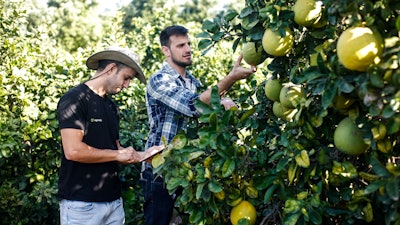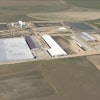
The food industry has expanded significantly in recent decades. With the shift from local grocers to numerous supermarkets, online shopping and same-day delivery, consumers now seek greater variety and quality at lower prices. To meet these expectations and remain competitive, the industry has embraced AI and Big Data, analyzing and optimizing production stages, starting from the cultivation of raw ingredients in the field.
The food supply value chain is vast, stretching from the sewn seed through to stores and supermarkets. Big Data is often utilized from the very first stage of food production, considered the growing stage, to aid in fertilization, irrigation and crop disease management processes. However, the uses and benefits of this data extend far beyond just these elements – and far beyond the farmers’ field.
The Critical Role of Crop Quality in Food Production
Looking further down the production line to the food manufacturing process, crop quality becomes critical. Generally, food manufacturers pay the same price per truck load of product, regardless of the quality of the load. Most often, any quality issues are only uncovered during the manufacturing process. For example, in pomegranates, nutritional input during the growing stage of the fruit determines the acidity levels of the crop, which in turn determines whether the pomegranate is made into juice or sold as a fresh fruit. To a juice producer, wanting to keep his product standard and consistent to consumers, receiving highly variable fruits makes this difficult to achieve.
Similar results are seen in almonds, where oil quality from properly fertilized trees has been found to result in almonds with better health contributions and a longer shelf life, giving producers the ability to boast a healthier product which lasts longer.
If a received truckload of produce doesn’t meet food manufacturers’ criteria, it may have to be discarded. This results in large amounts of waste and an unknown output per truck load of produce, ultimately affecting the bottom line for food manufacturers and filtering additional costs down the supply chain.
To keep output reliably high and keep costs low, it is critical for food manufacturers to improve the quality of their input ingredients and minimize this waste. The good news is that there’s a solution to the unpredictable quality of these input ingredients, and it all starts with crop health and nutrition.
Digital Solutions Driving Quality Standards Upwards
By leveraging Big Data and AI, crop nutrient requirements can now be calculated accurately and effectively, and can even be tailored to each individual crop type and growing conditions. Data such as rainfall, temperature and soil type are added to fertilization and yield data for each specific crop variant to create a holistic view of the individual crops’ nutritional and management needs. This data is then analyzed using advanced AI and can be leveraged by food manufacturers to ensure growing practices are as efficient, cost-effective, productive and sustainable as possible. By providing their growers with bespoke, live crop nutrition plans to achieve optimal yield, food manufacturers can guarantee they receive top quality ingredients and a maximal, predictable truck load from their suppliers. This, in turn, also unlocks key environmental benefits by reducing waste and minimizing disruptions to their production processes.
Naturally, AgTech innovations such as these offer the potential to improve the production of numerous different food products across the wider industry, beyond just pomegranates and almonds. These technologies are key in making crop nutrition plans more advanced and more accessible than ever, providing key decision support systems for both growers and food manufacturers and facilitating long-term, quantifiable benefits across the board. For manufacturers, deploying these digital solutions at field level essentially means that they are empowered to play a more vertically integrated role in the food supply value chain, and in turn, to increase their profitability.
AI’s Impact on the Food Supply Value Chain
Taking a wider view, the digital nature of these solutions also critically provides opportunities for further collaboration, making it possible to conduct agronomical research on a worldwide scale. By enabling researchers to combine their data with a wealth of global knowledge around specific crop varieties, disease management, nutritional needs and more, issues exactly like this can be addressed for stakeholders industry wide.
In essence, advancements in technology play a pivotal role in improving quality standards, enabling food manufacturers to meet consumer expectations for high-quality products at competitive prices. As AI progresses swiftly and digital solutions become more sophisticated and commonplace throughout the food supply value chain, the broader food industry as a whole experiences a positive impact. In summary, the benefits of harvesting data are just as valuable as the harvesting of the crops themselves.
Ron Baruchi is the CEO of Agmatix. For more information, visit www.agmatix.com.























